Extensive Experience
With years of industry experience, we has built a solid reputation for delivering top-notch products and exceptional customer service. Our team consists of highly skilled professionals who understand the complexities of different industries and can provide expert advice and guidance.
Exceptional Quality
We source our materials from trusted suppliers and subject them to rigorous quality control checks. This ensures that our flanges are durable, reliable, and able to withstand the most demanding conditions.
Customization Options
We understand that every project is unique, and sometimes, standard flanges may not meet your specific requirements. That's why we offer customization options to tailor our products to your exact needs. Our skilled engineers can work closely with you to develop custom flanges that fit perfectly into your application.
Competitive Pricing
We strive to offer competitive pricing without compromising on the quality of our products. Our cost-effective solutions ensure that you get the best value for your investment.
B16. 5 Flanges is limited to flanges and flanged fittings made from cast or forged materials, and blind flanges and certain reducing flanges made from cast, forged, or plate materials. Also included in this Standard are requirements and recommendations regarding flange bolting, flange gaskets, and flange joints.
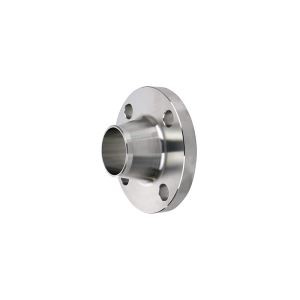
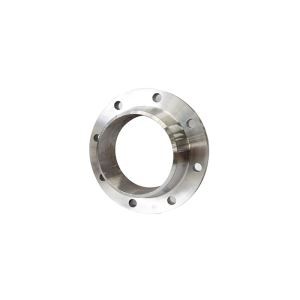


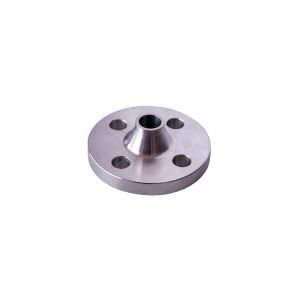
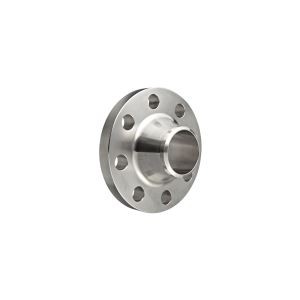
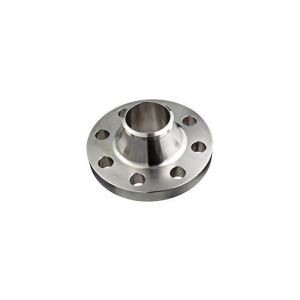

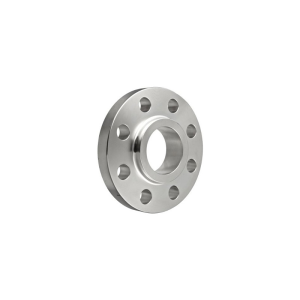



Versatility
ANSI B16.5 flanges are available in different shapes, sizes, and materials, making them highly versatile. They can be used in a wide range of applications, from low-pressure systems to high-pressure and high-temperature environments. This versatility makes ANSI B16.5 flanges suitable for various industries such as oil and gas, chemical, power generation, and water treatment.
Easy installation
ANSI B16.5 flanges are designed for easy installation. They come with pre-drilled bolt holes that align with the corresponding flanges, allowing for a quick and hassle-free assembly. The standard dimensions of ANSI B16.5 flanges ensure interchangeability, which further simplifies the installation process.
Strong and durable
ANSI B16.5 flanges are constructed using high-quality materials such as carbon steel, stainless steel, and alloy steel, ensuring strength and durability. These flanges can withstand high pressures, temperature fluctuations, and corrosive environments, making them suitable for demanding applications. Their robust construction reduces the risk of leaks and failures, resulting in increased safety and reliability.
Leak proof connection
One of the main advantages of ANSI B16.5 flanges is their ability to provide a leak-proof connection. The flange system includes a gasket placed between the flange faces, which forms a tight seal when the bolts are tightened. This prevents the leakage of fluids or gases and minimizes the risk of contamination or environmental damage.
Flexibility and adaptability
ANSI B16.5 flanges offer flexibility and adaptability in terms of connection options. They can be easily welded or bolted, depending on the specific requirements of the application. The ability to adapt to different connection methods makes ANSI B16.5 flanges suitable for both permanent and temporary installations.
Cost effective
ANSI B16.5 flanges are a cost-effective solution for pipe connections. Their availability in standard sizes and materials makes them more affordable compared to custom-made flanges. Additionally, their long lifespan and low maintenance requirements contribute to overall cost savings in the long run.
Weld Neck Flanges
Weld neck flanges have a long tapered hub that is welded to the pipe, providing a strong and leak-resistant connection. They are commonly used in high-pressure and high-temperature applications, as well as in situations where the flange needs to be rotated for alignment.
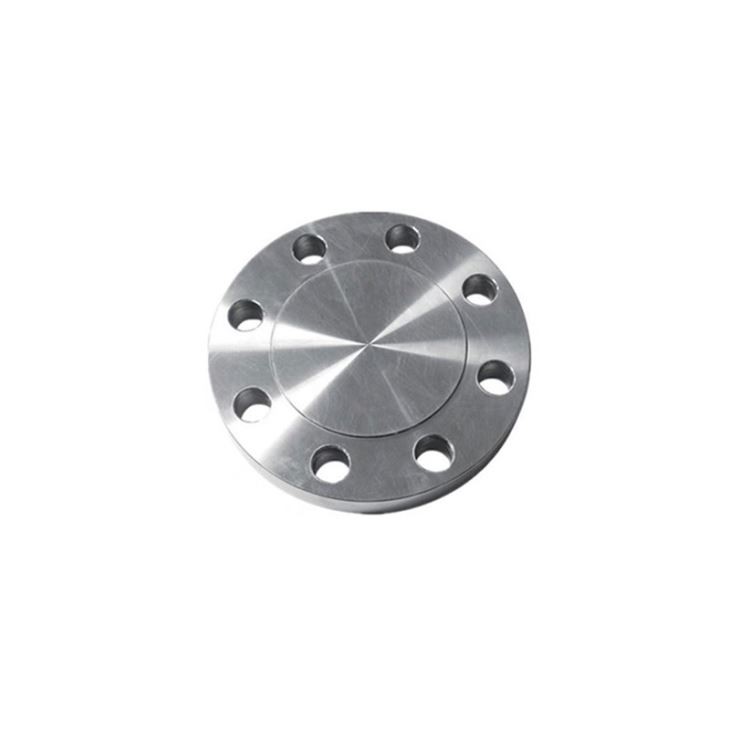

Slip-on Flanges
Slip-on flanges have a slightly larger diameter than the pipe, allowing them to slide over the pipe and be easily welded in place. These flanges are popular for low-pressure applications and are cost-effective due to their simpler design.
Socket Weld Flanges
Socket weld flanges have a socket or bore that is welded to the pipe, creating a smooth internal flow path. These flanges are suitable for small-diameter piping systems and are commonly used in industries such as chemical processing and oil refineries.
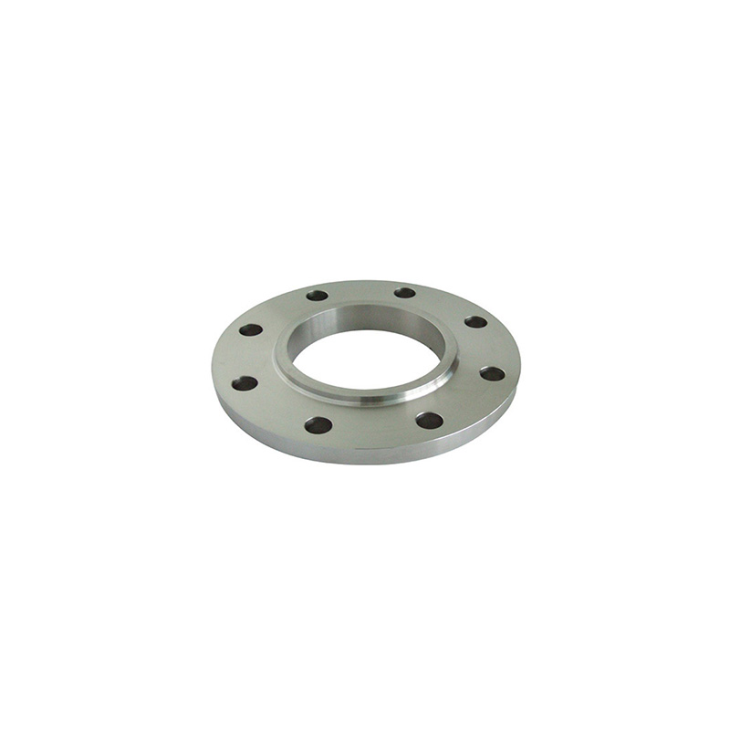
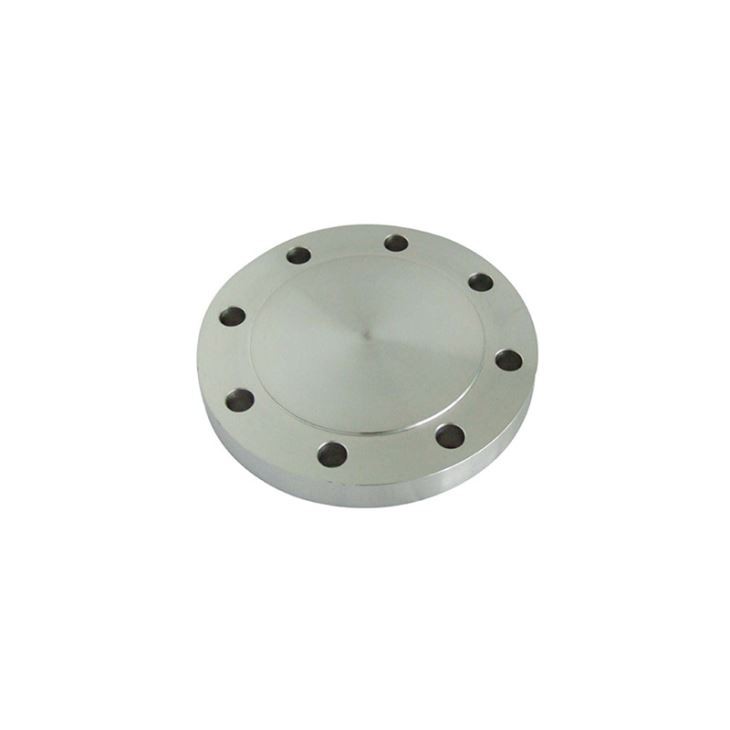
Blind Flanges
Blind flanges are solid discs used to seal the end of a pipe or vessel. They are commonly used in systems where future connections might be required or where maintenance and inspection are limited. Blind flanges can also be used to add pressure relief devices.
Threaded Flanges
Threaded flanges have internal threads that match the external threads on the pipe or fittings. These flanges are easy to install and are commonly used in small-diameter, low-pressure piping systems, such as water supply lines.


Lap Joint Flanges
Lap joint flanges consist of a flat ring with bolt holes that is used in conjunction with a stub end. The stub end is welded to the pipe, while the flange can rotate freely around the stub end. These flanges are used in systems requiring frequent disassembly for inspection or cleaning.
Carbon steel: Carbon steel flanges, especially those made of ASTM A105 material, are widely used due to their excellent mechanical properties and good compatibility with a wide range of applications. They offer high strength, good ductility, and resistance to wear and tear. Carbon steel flanges are suitable for low to moderate temperature and pressure conditions.
Stainless steel: Stainless steel flanges are another popular choice for ANSI B16.5 flanges. They are known for their corrosion resistance, making them suitable for applications where the fluids or gases being transported are corrosive in nature. Stainless steel flanges are available in various grades such as 304, 316, and 316L, each offering different levels of corrosion resistance and mechanical properties.
Alloy steel: Alloy steel flanges are used in applications that require higher strength and better performance under extreme temperature and pressure conditions. These flanges are made from materials such as ASTM A182 F11, F22, or F91, which offer enhanced mechanical properties, excellent toughness, and resistance to creep and fatigue.
One common application of ANSI B16.5 flanges is in the oil and gas industry. They are used to connect pipes and fittings in oil and gas pipelines, refineries, and processing plants. These flanges provide a strong and secure connection that can withstand high-pressure and high-temperature conditions, ensuring the safe and efficient transportation of oil and gas.
Another important application of ANSI B16.5 flanges is in the chemical industry. They are used in chemical processing plants for connecting pipes and equipment that handle corrosive or hazardous materials. The ANSI B16.5 flanges are made from materials such as stainless steel, carbon steel, or alloy steel, which offer excellent resistance to corrosion and chemical degradation. This ensures the integrity and safety of the piping system in chemical plants.
In the power generation industry, ANSI B16.5 flanges are used in power plants for connecting pipes and equipment in steam and water systems. These flanges can handle high-pressure and high-temperature conditions, making them suitable for power generation applications. They provide a reliable connection that prevents leakage and ensures the efficient operation of power plants.
The food and beverage industry also extensively uses ANSI B16.5 flanges. They are used in processing plants for connecting pipes that transport various food and beverage products. These flanges are made from materials that are safe for food contact and comply with the necessary sanitary standards. The ANSI B16.5 flanges ensure a hygienic and leak-proof connection, preventing contamination and ensuring the quality of food and beverage products.
Material Selection: Picking the right flange materials is the first stage in the machining process. The most popular materials for making flanges are alloy steel, carbon steel, or stainless steel. However, the ideal material often depends on the application’s temperature, pressure, and corrosion resistance needs.
Material Cutting and Shaping: Following selection, the material is sliced and formed. Big metal plates are cut into smaller pieces to get the right size for the flange. The produced parts are then heated to the proper temperature to prepare them for further processing.
Heat Treatment: Depending on the material and purpose of a flange, the flanges may undergo heat treatment methods such as annealing, quenching, or tempering. Heat treatment boosts the flange’s mechanical properties while enhancing its resilience, toughness, and resistance to wear and corrosion.
Forming and Forging: The heating process makes the metal components malleable, facilitating the proper flange shape development. Machinists utilize different methods to forge the flange, including hot forging and cold forging. The metal is formed at room temperature in cold forging, while hot forging involves forming heated material/metal under high pressure.
Machining: After the initial cutting and shaping, the flange is machined to achieve precise tolerances and to refine its dimensions. This operation includes facing sealing surfaces, chamfering edges, and drilling holes for bolt connections. CNC (Computer Numerical Control) machines are often used for automated and precision machining.
Surface Finish: Flanges might undergo surface finishing operations like grinding or polishing to achieve the desired smoothness, remove surface defects, and improve their overall look.
Inspection and Quality Control: Quality control is an important stage in the production of flanges. Flanges undergo a thorough examination process to ensure they comply with the appropriate norms and specifications. Inspecting for quality control includes measurement inspections, finishes and surface analyses, and non-destructive testing methods like ultrasound or magnetic particle analysis.
Components of ANSI B16.5 Flanges
Flange Facing: Flange facing refers to the surface of the flange where it makes contact with the connecting pipe or valve. The flange facing is carefully machined to provide a flat and smooth surface for achieving a tight seal. Common types of flange facings include flat face (FF), raised face (RF), tongue-and-groove (T&G), and ring joint (RTJ).
Flange Gasket: A flange gasket is a sealing material placed between the flange facing and the connecting pipe or valve. It fills any irregularities in the mating surfaces and ensures a leak-free joint. Flange gaskets are usually made from a variety of materials including rubber, PTFE (polytetrafluoroethylene), graphite, or metal.
Bolts: Bolts are used to hold the flanges together and create a tight connection. They pass through the bolt holes in the flange and are secured with nuts. Depending on the flange size and pressure requirements, the number and size of bolts vary. High-strength bolts are usually used to provide sufficient clamping force.
Nuts: Nuts are paired with bolts to secure the flanges tightly. They are threaded onto the bolts and tightened to create compression and maintain the integrity of the joint. Nuts are typically made from carbon steel or stainless steel for their strength and corrosion resistance.
Studs: Studs are often used in place of bolts for ease of installation and maintenance. Studs are threaded rods that have a thread on both ends. They are screwed into the flange bolt holes from one flange and secured with nuts on the other flange. Studs help to simplify the alignment of flanges during assembly.
Flange Fittings: Flange fittings are additional components used in flange connections to enhance the performance and versatility of the system. They include blind flanges, weld neck flanges, slip-on flanges, socket weld flanges, and lap joint flanges. These fittings have specific designs and applications to suit different piping requirements.
Flange Rings: Flange rings, also known as backing rings or weld rings, are used to provide additional support and reinforcement to the flange joint. They are usually welded to the pipe or valve and act as a backing surface for the flange to distribute the load evenly.
Choose the plan that suits you best.
Type
The geometry of the flange as a whole. Welding neck, slip-on, and socket weld, are examples of different flange types.
Face
The sealing area of the flange. Flat face, raised face, and ring type joint, are examples of different flange faces.
Standards and Specification
Flanges are manufactured to comply with given standards and specifications. Standards and specifications dictate the dimensions, geometry, schedule, and material, of a given flange (to name a few factors).
Dimensions
The dimensions of a flange’s hub, face, blade etc. Dimensions depend upon nominal pipe size (NPS) and the pressure class required for a given application.
Nominal Pipe Size (NPS)
A dimensionless unit of measurement defining the size of the item (pipe, fitting etc.) that connects to the flange.
Pressure Class
The pressure-temperature rating of the flange for a given material. Despite the name ‘pressure class’, this factor is material and temperature dependent.
Material
The material from which the flange is manufactured e.g. cast iron, carbon steel, stainless steel etc.
Schedule (SCH)
A pipe’s thickness/schedule. The schedule of a pipe is relevant only for welding neck and lap-joint flanges because the schedule of these flanges must match the associated pipe schedule to which they are connected. The other flange types either slide partly into, screw into, or penetrate through, their associated flange, thus the flange schedule does not need to match the pipe schedule. The schedule is relevant for swivel-ring flanges, but these have limited application and will not be discussed further.
Flange Material: The material used in the construction of flanges plays a crucial role in determining their performance and lifespan. ANSI B16.5 flanges are available in various materials such as carbon steel, stainless steel, and alloy steel. The choice of material should be based on the specific environmental conditions, fluid or gas medium, and the required level of corrosion resistance. Understanding the properties and limitations of different materials is essential for making an informed decision.
Pressure and Temperature Ratings: ANSI B16.5 flanges are designed to withstand specific pressure and temperature ratings. It is vital to consider the maximum working pressure and temperature of your piping system to ensure that the flanges can handle the required load without any failures. Failure to consider these ratings can lead to leaks, catastrophic failures, and safety hazards. Always consult the appropriate standards and guidelines to ensure the flanges are compatible with the operating conditions.
Flange Dimensions and Sizes: ANSI B16.5 flanges are available in a wide range of dimensions and sizes to accommodate different piping system requirements. It is crucial to accurately determine the dimensions and sizes needed for your application. Consider factors such as pipe size, flange thickness, bore diameter, and flange face type (raised face, flat face, etc.). Adequate sizing is essential for proper sealing and connection between flanges and pipes.
Flange Design and Configuration: ANSI B16.5 flanges come in various designs and configurations to suit different applications. The most common flange designs include slip-on, weld neck, blind, lap joint, and threaded flanges. Each design offers different advantages and limitations. Consider factors such as ease of installation, accessibility for maintenance, and sealing requirements when choosing the flange design.
Compatibility with Gaskets and Bolting: Flanges require gaskets and bolting to ensure a tight and leak-free connection. It is important to consider the compatibility between the flange, gasket, and bolting materials. The choice of gasket material should be based on the application, fluid or gas medium, and temperature and pressure requirements. Similarly, the selected bolting material should meet the required strength and corrosion resistance criteria.
Industry Standards and Regulations: ANSI B16.5 flanges are designed and manufactured according to industry standards and regulations. It is essential to ensure that the flanges you select comply with the appropriate standards, such as ANSI/ASME and API. Adhering to these standards guarantees that the flanges meet quality and performance requirements, ensuring a safe and reliable piping system.
EO flange co.,Ltd. established in 1991 and in charge of commercial area with more than 20 years' experience in manufacturing, stocking, processing and exporting flanges. Our company annually produces 5,000 tons of finished flanges and pipe fittings made from stainless steel, carbon steel, alloy steel, dual-phase steel and many other materials. The products have been exported to 28 countries and areas, such as Japan, America, France, Germany, Italy, etc. With self-run import & export right, the company is capable of directly taking foreign customers' orders, producing standard flanges in accordance with ANSI, DIN, ASME and GOST domestic and international standards, and producing ring-type forgings, non-standard flanges and pipe fittings according to customers' drawings or samples.

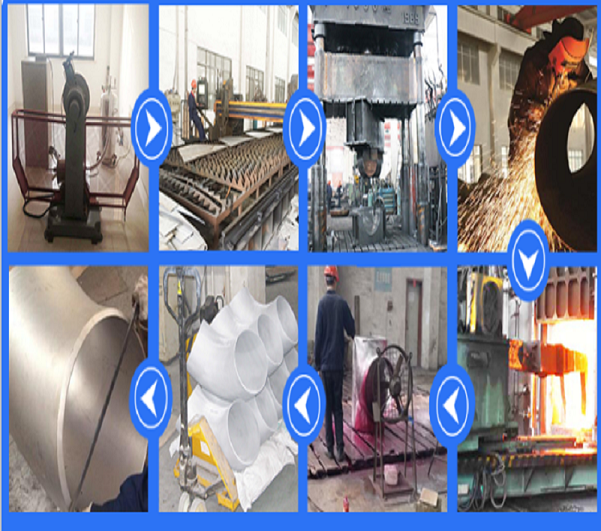



Q: What is the ANSI B16 5 standard for?
Q: What are the ANSI flange limits?
Q: What are the two main standards of flanges?
Q: How do I identify my ANSI flange?
Q: What is the minimum number of bolts in a flange?
Q: What is the most commonly used flange?
Q: What is ANSI flange classification?
Q: What is the difference between ANSI B16 5 and ANSI B16 47?
Q: What are flange bolts called?
Q: What is short bolting in flanges?
Q: What is ANSI B16 5 flanges?
Q: What is ANSI standards?
Q: What is the ANSI B16 5 standard for?
Q: Can I use a washer instead of a flange bolt?
Q: Do flanges need gaskets?
Q: Does a flange nut lock?
Q: What is the proper torque sequence for a flange?
Q: What are the two types of bolts used to assemble flanges?
Q: What items are to be considered when bolting flange to flange?
Q: Why do my flanges leak?